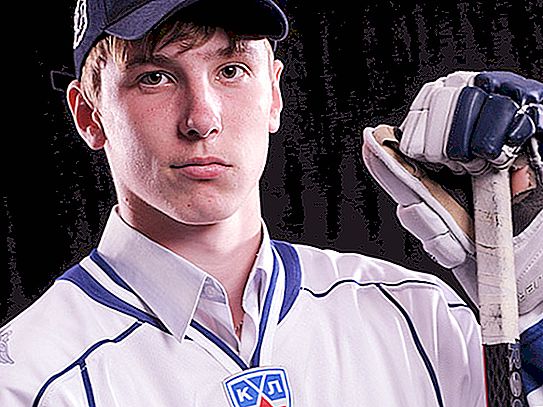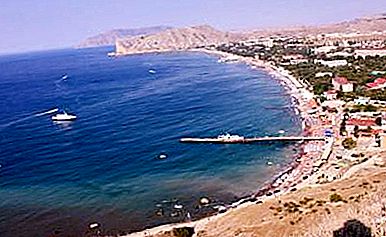The origins of the Uzbek national dance originate in ancient times. The country's dance art developed under the influence of rituals and rituals - traditional harvest holidays, birth of children, wedding festivities.
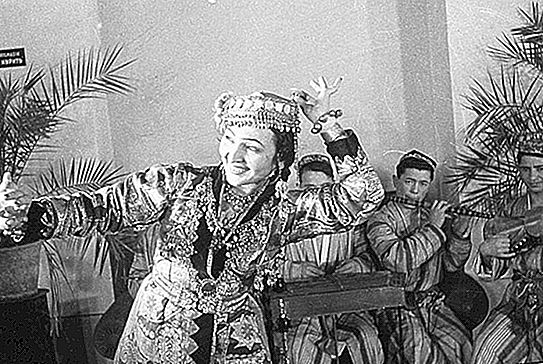
The main motives of dance plastics are joy, love, sadness, humor and irony. A delightful dance is often compared to pantomime: this is how expressive hand movements and facial expressions of the performer are.
From the bottom of my heart
And then the dancers go on stage. They press their palms to their hearts, and then raise their hands to the sky, showing that they give their hearts to spectators and heaven …
It can be said that three main schools of Uzbek national dance have a special influence on the development of dance art:
- Khorezm
- Ferghana
- Bukhara.
Modern dance trends in Uzbekistan have been supplemented by dances of the inhabitants of the steppes and highlanders, which stand out as separate schools for comprehension of art.
The action takes place to the sound of national musical instruments:
- the rhythm is set by the doira and the uproar - from gentle rustling to drum rhythms;
- it is picked up by bow-string cuts (similar to a lute) and sato - the oldest stringed-bow instrument, similar to a violin;
- how the breath of the soul of the dance can be heard wind Uzbek pipes and flutes - surnay and nai;
- Filling background and accents are given by string-plucked instruments dutar and chang.
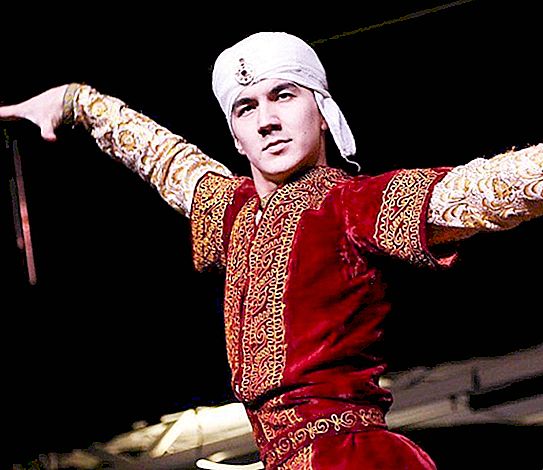
During weddings they dance with the sound of karnaya - a super long wind instrument that gives special solemnity to music and dance
The dance miracle of Khorezm
According to historians and theorists of the Uzbek national dance, the traditions of performance in different schools do not repeat each other.
The Khorezm dance art is famous for its expression, originality and imitation of plots taken from the life of nature: stylization of the dancing of birds and animals, which can even be accompanied by sound imitations.
There is a peculiar predisposition to circus effects: dancing with knives, fire, high above the ground - on a rope.
The most popular dance that won the audience’s love is “Clank”, which is performed by girls dressed in monists and bracelets with hundreds of coins, or a plate dance when the dancer performs a bewitching dance while standing on a plate. Many other game dances containing various plots.
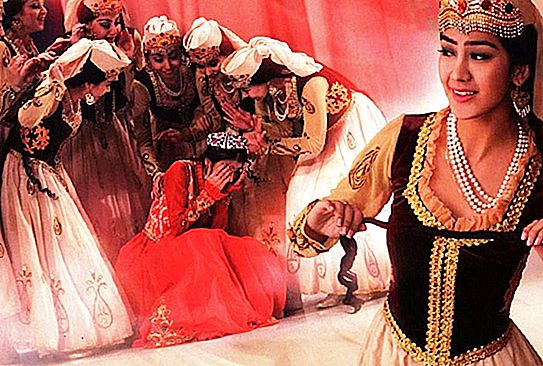
The Khorezm school is distinguished by a humorous and even satirical orientation of dances, when the dance makes fun of the shortcomings of people performing certain professional duties, for example, a cook, hairdresser or baker.
The costumes of this school are also unusual. For example, the Uzbek men's dance costume of Khorezm art is necessarily equipped with a rough fur hat like a hat, and women's hats, on the contrary, are light and elegant, reminiscent of the famous tablet hats decorated with feathers, tassels and gold. In addition, women's suits are heavily hung with coins.
In dance plastic there are a lot of beautiful hand movements, a sliding gait and light jumps, rich facial expressions. The dance is always expressive.
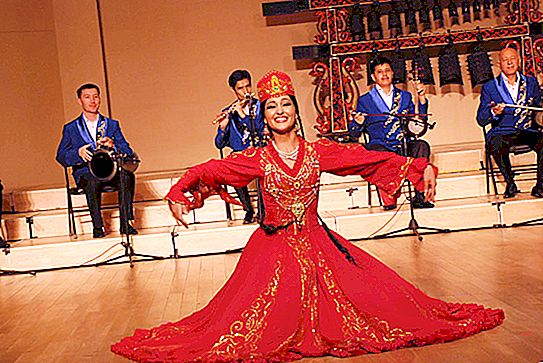
Tales of the Ferghana Valley
The Ferghana dance school is particularly smooth in the movements of dancers. Expressively turned upwards hands, a lot of circles in place, speaking plastic.
Elements of pantomime and expressive facial expressions are characteristic of all Uzbek national dances. But the Ferghana school allows improvisation with an emphasis on individual emotions and expression of the dancer or dancer’s own feelings.
Sometimes dance variations resemble miniature performances, scenes from life. It seems that life itself is dancing on stage.
Vivid pictures from the life of a young girl, filled with dreams of her beloved, or the care of an economic and smart guy, connected with the device in life, work: baking bread or pottery.
Role-playing dances - soft, plastic and expressive - are accompanied not only by the demonstration of everyday situations, but also by compositionally differ in the completeness of the plot, with special dance chords.
In the photo, a dance of a young girl dreaming of a happy life.
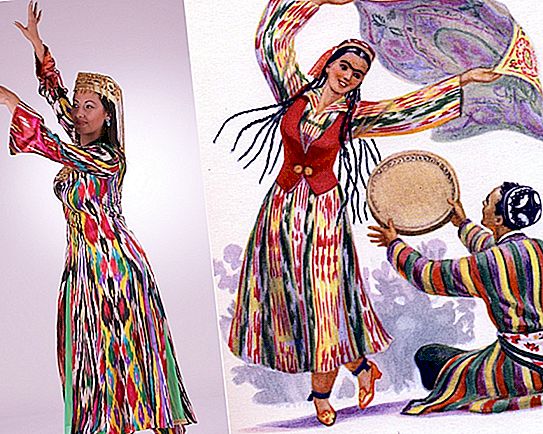
Like "Lyazgi" in the Khorezm school, so in the Ferghana school the dance "Tanovar" is considered the most popular.
The word itself means the enjoyment of the soul, comes from two words ("tan" - body or soul, "ovar" - pleasure).

The dance eloquently talks about the feelings of a woman, this is a genuine expression of a loving female soul.
Energetic dances of Bukhara traditions
Bukhara and Samarkand combine the traditions of the Bukhara dance art.
The dances of this school are distinguished by sharp movements, the work of the upper part of the body of dancers with shaking of their shoulders, tilting and falling to their knees. At the same time, women's dance of this orientation is particularly flexible and passion.
In dances of the Bukhara school, circus or comic elements are often used, showing scenes from the lives of ordinary people.
The photo below shows the Uzbek male national dance with a dish.
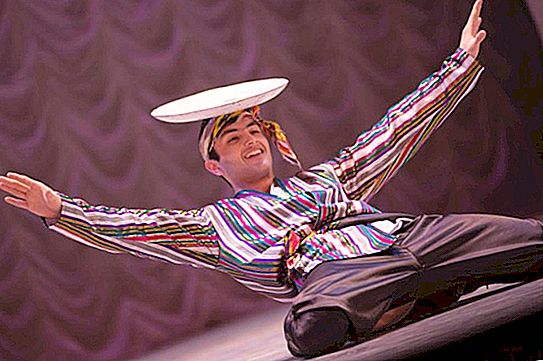
The most famous are complex dances with expressive facial expressions such as "Larzon", "Zamin Bazi".
The peculiarity is that in Bukhara national dances castanets are used that emphasize the rhythms of the dance.



